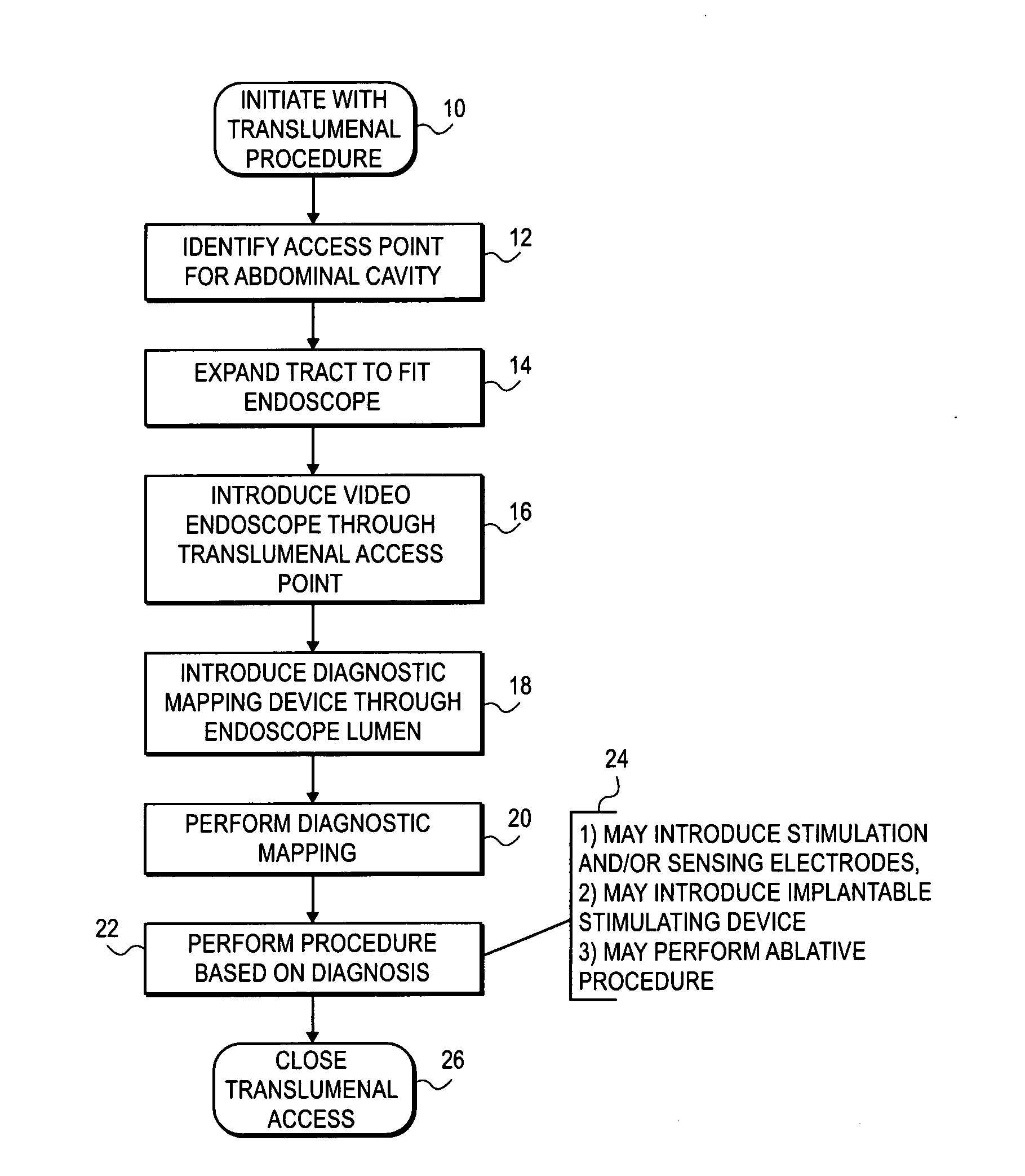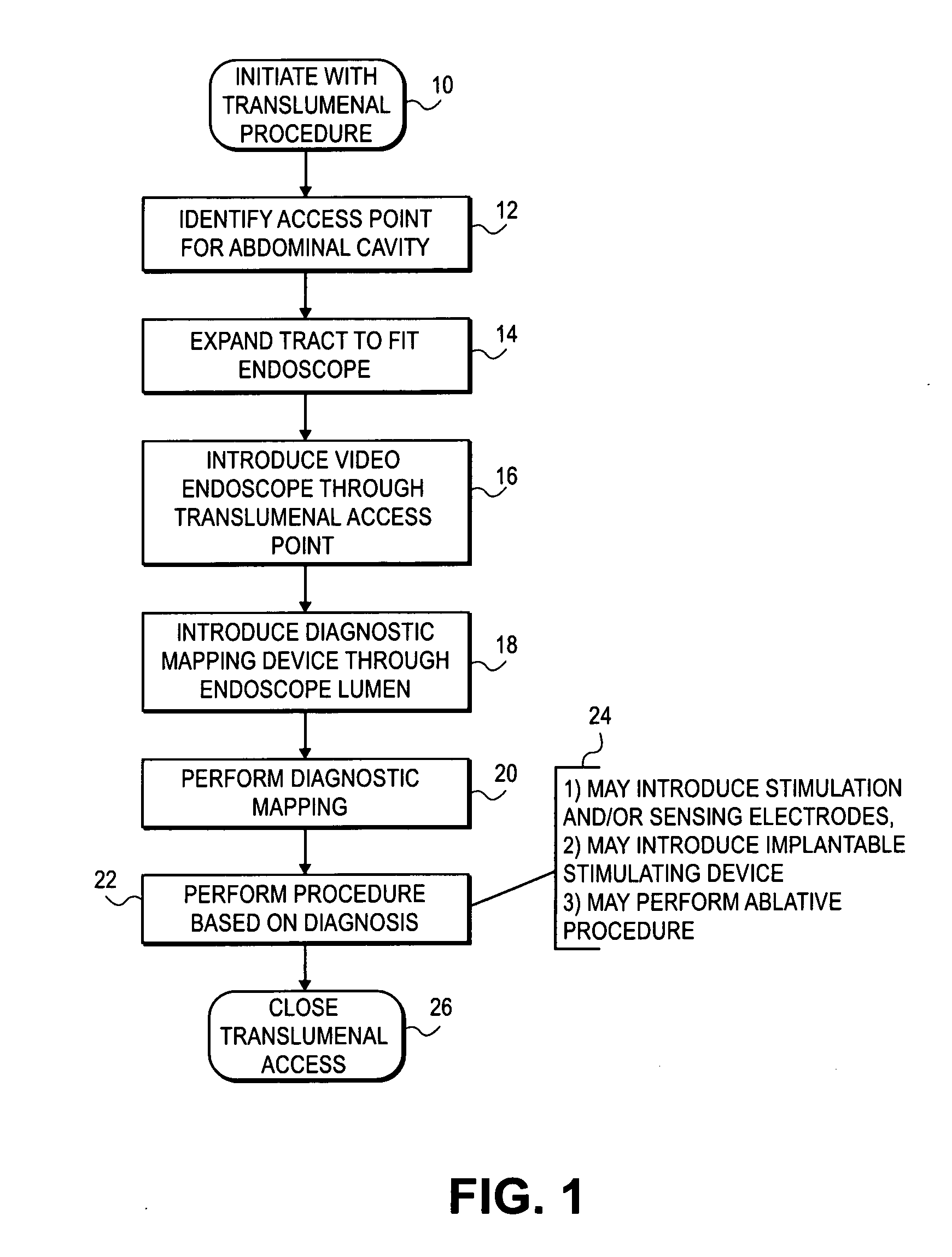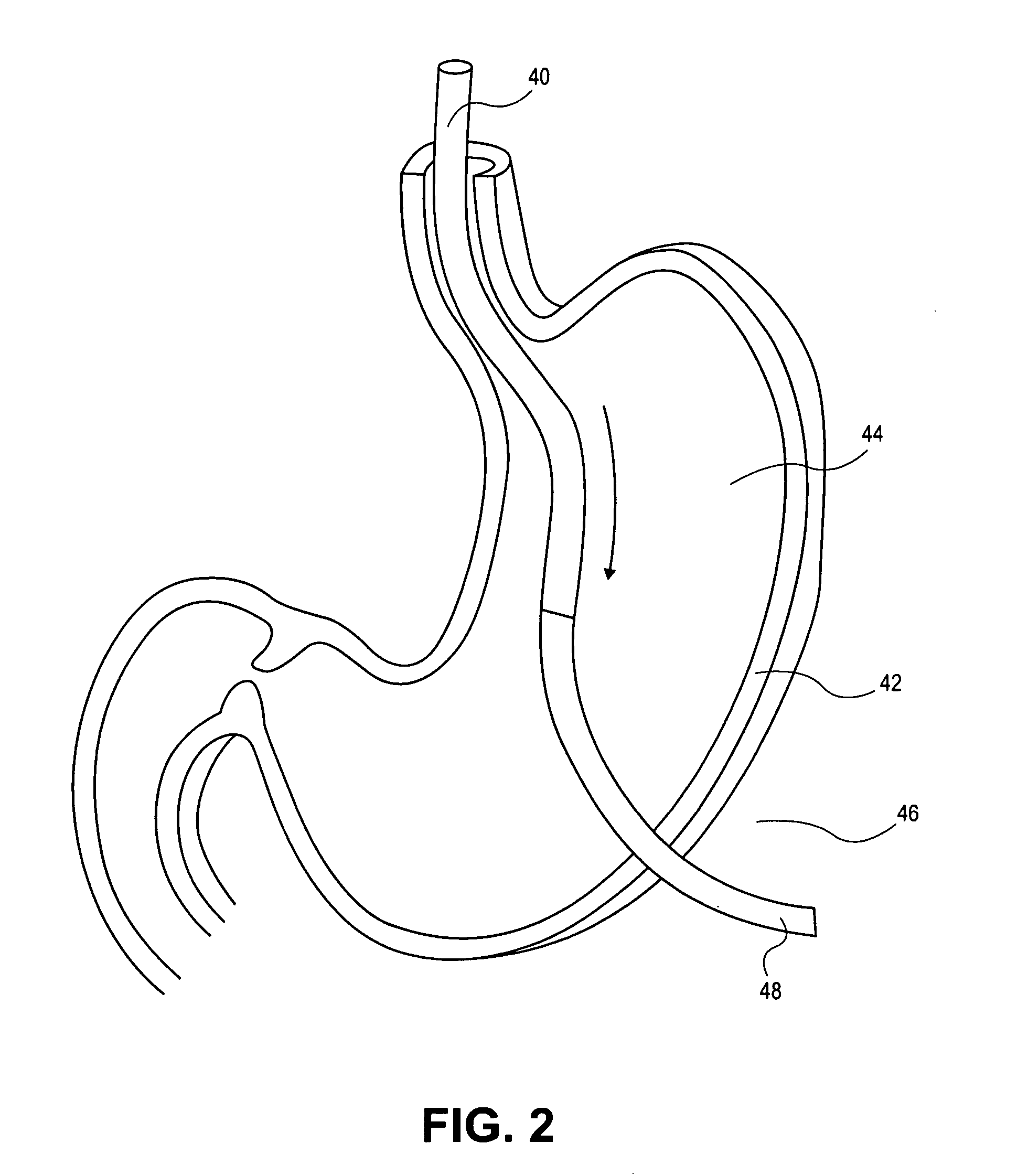Transvisceral neurostimulation mapping device and method
a mapping device and transvisceral technology, applied in the field of transvisceral neurostimulation mapping device and method, can solve the problem that the neurostimulation mapping tool lacks the ability to mark stimulation locations
- Summary
- Abstract
- Description
- Claims
- Application Information
AI Technical Summary
Benefits of technology
Problems solved by technology
Method used
Image
Examples
example 1
[0049] Methods: Pigs were anesthetized and transgastric peritoneal access with a flexible endoscope was obtained using a guidewire, needle knife cautery and balloon dilatation. The diaphragm was mapped to locate the motor point (where stimulation provides complete contraction of the diaphragm) with an endoscopic electrostimulation catheter. An intramuscular electrode was then placed at the motor point with a percutaneous needle. This was then attached to the diaphragm pacing system. The gastrotomy was managed with a gastrostomy tube.
[0050] Results: Four pigs were studied and the diaphragm could be mapped with the endoscopic mapping instrument to identify the motor point. In one animal, under trans-gastric endoscopic visualization a percutaneous electrode was placed into the motor point and the diaphragm could be paced in conjunction with mechanical ventilation.
[0051] Conclusion: These animal studies support the concept that transgastric mapping of the diaphragm and implantation of...
example 2
[0052] Methods: Four female pigs (25 kg) were sedated and a single channel gastroscope was passed transgastrically into the peritoneal cavity. Pneumoperitoneum was achieved via a pressure insulator through a percutaneous, intraperitoneal 14-gauge catheter. Three other pressures were recorded via separate catheters. First, a 14-gauge percutaneous catheter passed intraperitoneally measured true intra-abdominal pressure. The second transducer was a 14-gauge tube attached to the endoscope used to measure endoscope tip pressure. The third pressure transducer was connected to the biopsy channel port of the endoscope. The abdomen was insulated to a range (10-30 mmHg) of pressures, and simultaneous pressures were recorded from all pressure sensors.
[0053] Results: Pressure correlation curves were developed for all animals across all intraperitoneal pressures (mean error −4.25 to −1 mmHg). Endoscope tip pressures correlated with biopsy channel pressures (R2=0.99). Biopsy channel and endoscop...
PUM
 Login to View More
Login to View More Abstract
Description
Claims
Application Information
 Login to View More
Login to View More - R&D
- Intellectual Property
- Life Sciences
- Materials
- Tech Scout
- Unparalleled Data Quality
- Higher Quality Content
- 60% Fewer Hallucinations
Browse by: Latest US Patents, China's latest patents, Technical Efficacy Thesaurus, Application Domain, Technology Topic, Popular Technical Reports.
© 2025 PatSnap. All rights reserved.Legal|Privacy policy|Modern Slavery Act Transparency Statement|Sitemap|About US| Contact US: help@patsnap.com



